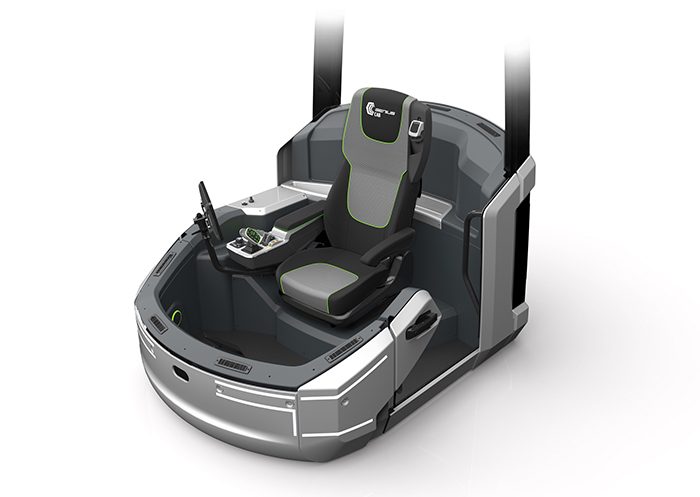
Within the scope of the CAB Concept Cluster (CCC), Grammer will present a complete system consisting of an innovative, ergonomically optimized driver seat with electrically adjustable features, plus a multi-functional armrest and 12-inch multi-touch display for controlling all vehicle and seat comfort functions at bauma. The CAB Concept Cluster counts 13 participating partners, including global players, innovative OEM suppliers, prominent scientific institutes, designers, industry associations, rental companies, and vehicle users. They have all teamed up to pool their expertise and decades of practical experience for developing the “Genius Cab” model cab.
“As the cluster partner responsible for the aspect of interior HMI / assistance, it was important for us to work with our partners to ergonomically gear the human/machine interface used to control all vehicle functions to the operator”, says Ralf Hoppe, Vice President for Strategic Product Planning at Grammer AG. “Since we already supply complete systems comprising a seat, multifunctional armrest, display, and graphical user interface, we have been able to make a major contribution to functionally integrating the cabin’s interior.”
The development work under the theme of “human-centered design” has focused exclusively on meeting the needs of vehicle drivers by enabling them to intuitively and ergonomically control and operate all vehicle and comfort functions using a multifunctional armrest and multi-touch display. The newly designed driver seat for the Genius Cab boasts a large number of electrically adjustable comfort features with a memory function that remembers settings. The seat is linked to the vehicle’s CAN-bus system and includes a driver detection system for immediate and completely automatic adjustment to each operator.
Numerous electrically powered functions, including adjustment of the seat’s fore/aft position, height, backrest and seat cushion angles, and shoulder supports, give the driver optimal comfort for everyday work. All of these functions are conveniently controlled via the multi-touch display. This eliminates the need for conventional manual seat controls. In addition, the seat features an integrated headrest, height-adjustable three-point safety belt, adjustable lateral contours, seat climate control, seat heating, and - for the ultimate in comfort - even a massage function. It also opens up new possibilities for customizing the cab’s interior design, since the ambient lights of the cabin and seat are coupled to one another. This enables extras such as an illuminated logo on the backrest or illuminated piping that is coordinated with the overall cabin design to evoke a special feel-good ambiance.

The newly developed electronic multifunctional armrest with 12” multi-touch display can be used not only to adjust the seat and control the vehicle, but also to operate main cabin functions such as lighting, heating and A/C, sun protection, or windshield wipers. This puts virtually all functions at the driver’s fingertips with outstanding ergonomics.
Grammer has also been in charge of developing the architecture of the GUI (graphical user interface). The goal was to develop an innovative, user-friendly interface for the multi-touch display. In cooperation with the Dresden University of Technology, the company has designed an intuitive, very well organized touch-sensitive panel that maximizes workplace ergonomics. The modular concept underlying the multifunctional armrest makes it possible to flexibly integrate standard components such as joysticks, keypads, fingertip switches, or rotary-push-buttons depending on user needs. This permits the creation of a tailored HMI concept for each customer’s unique application. The redesigned joystick makes it very easy to operate the vehicle: the hand rests comfortably in a horizontal position and ergonomically positioned keypads for thumb and index finger reduce unnatural hand postures, resulting in an increase in productivity. Optionally, these elements can be supplemented by integrating backlit pushbuttons and rotary switches in the joystick handle.
Looking ahead, the trend in off-highway vehicles is toward efficiently maximizing system integration. This calls for progressively digitizing machines and cabins. In addition, greater safety, ergonomics, efficiency, and comfort requirements must be met, along with greater expectations with regard to styling and recognition value in international markets.





